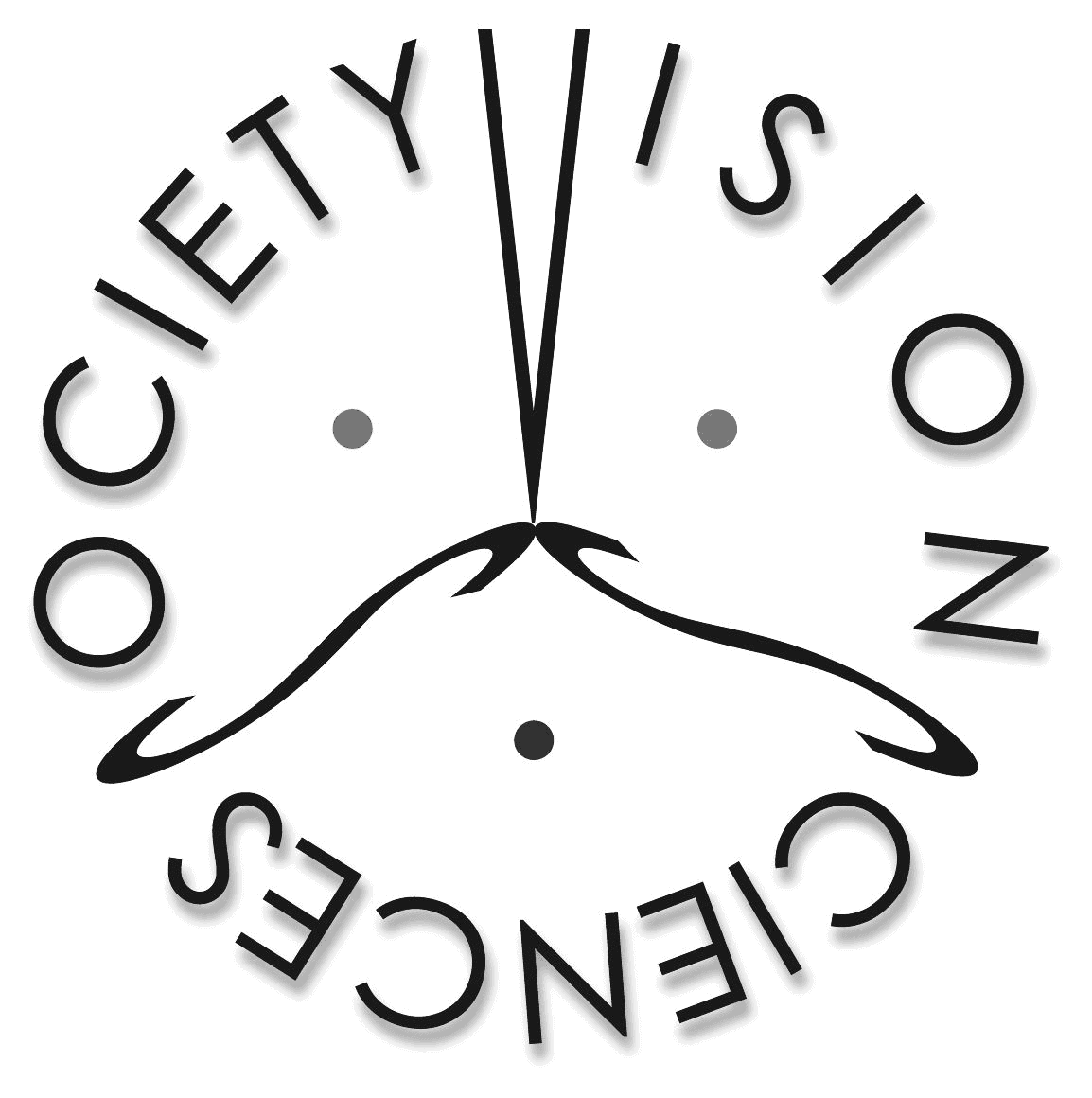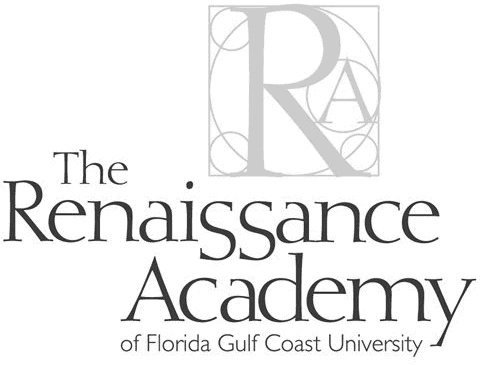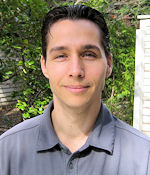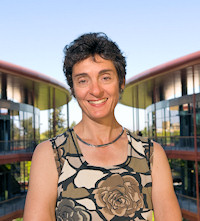Monday, May 10, 2010, 7:00 – 10:00 pm
Dinner: 7:00 – 9:00 pm, Vista Ballroom, Sunset Deck and Mangrove Pool
Demos: 7:30 – 10:00 pm, Royal Ballroom 4-5 and Acacia Meeting Rooms
Please join us Monday evening for the 8th Annual VSS Demo Night, a spectacular night of imaginative demos solicited from VSS members. The demos highlight the important role of visual displays in vision research and education.
This year, Arthur Shapiro (chair), Peter Tse, and Alan Gilchrist are co-curators for Demo Night, and Gideon Caplovitz is assistant curator.
A buffet dinner will be held in the Vista Ballroom, on the Sunset Deck and Mangrove Pool. Demos will be located upstairs on the ballroom level in the Royal Ballroom 4-5 and Acacia Meeting Rooms.
Some exhibitors will also be presenting demos in the Orchid Foyer.
Demo Night is free for all registered VSS attendees. Meal tickets are not required, but you must wear your VSS badge for entry to the Dinner Buffet. Guests and family members of all ages are welcome to attend the demos but must purchase a ticket for dinner. You can register your guests at any time during the meeting at the VSS Registration Desk, located in the Royal Foyer. A desk will also be set up at the entrance to the dinner in the Vista Ballroom at 6:30 pm.
Guest prices: Adults: $25, Youth (6-12 years old): $10, Children under 6: free
The Ambiguous Corner Cube and Friends
Kenneth Brecher (Boston University)
Several three-dimensional visually ambiguous objects that are bi-stable, tri-stable (and possibly more) will be displayed. The missing corner cube in particular probes interesting questions about the number of possible visual interpretations of such objects and their relative strength.
The Not-So Rotating Snakes
Christopher Cantor, Humza Tahir (University of California, Berkeley)
This illusion is an extension of our poster: we will show how certain optical manipulations kill the rotating snakes illusion.
Fun with stick shadow motion
Gideon Paul Caplovitz (Princeton University), Marian E. Berryhill (University of Pennsylvania)
Shadows of objects moving in 3D that are projected on a 2D surface move in ambiguous ways and have been used to provide insight into how our brains construct motion percepts. Here we re-create a simplified and interactive version of the original ‘stick shadow motion’ apparatus (Metzger 1934).
Tangible display systems: bringing virtual objects into the real world
Jim Ferwerda (Rochester Institute of Technology)
We are developing tangible display systems that allow people to interact with virtual surfaces as naturally as they can with real ones. We integrate accelerometers and webcams in laptops and cell phones with 3D surface models and computer graphics rendering, to create images of glossy textured surfaces that change realistically as the user manipulates the display.
Sharon Gershoni Photographs: Aesthetic Studies in Visual Perception
Sharon Gershoni, Shaul Hochstein (Neurobiology Department, Hebrew University)
I am an artist and a scientist. Since 2000 I have been pursuing graduate studies in visual perception in Japan, as well as being an artist in residence at visual perception labs. There I started developing the visual sciences-art connection, which I currently continue at the ICNC and Bezalel Art Academy. The photographs are the product of this interdisciplinary path.
Waves of Lights, Magic Flowers and Unchained Dots illusions
Simone Gori (Department of General Psychology, University of Padua), D. Alan Stubbs (University of Maine)
We will present three new motion illusions. Wave of Lights and Magic Flowers present surprising size and brightness variations due to observer motion, while the Unchained Dots Illusion is characterized by the misperception of dot trajectory.
Free the Ring!: Striking Color Spreading Induced Transparency
Abigail Huang, Alice Hon and Eric Altschuler (New Jersey Medical School)
We read/saw that vertical yellow bars can appear to spread geometrically faithfully through a black horizontal bar. Here we show that in a stereopsis display this effect can give striking transparency—e.g., a white ring inside a black pyramid.
Coming face to face with 2-faced faces
Melinda S. Jensen and Kyle E. Mathewson (University of Illinois at Urbana-Champaign)
In this demo, we present pairs of identical ambiguous figures. Even with intentional effort, observers typically cannot hold opposing interpretations of the two figures. However, with a simple and powerful technique, observers can see the alternative interpretations side by side.
The Jaggy Diamonds Illusion
Qian Kun and Takahiro Kawabe (Kyushu University)
We report a new illusion where the edges of diamonds placed at the intersections of crossing grids are perceived to be jaggy (the jaggy diamonds illusion). Luminance contrast among diamonds, grids, and background is a strong determinant for this illusion.
Stretching out in the tub
Lydia Maniatis (American University)
A large image of a bathtub appears to change shape as the viewpoint changes.
Smoothness Aftereffect
Emmanuel Guzman Martinez, Marcia Grabowecky, Laura Ortega-Torres, and Satoru Suzuki (Northwestern University)
Adaptation to a grainy, randomly black and white flicker produces an apparently smoother region on a subsequent gray display. This percept can appear in rivalry with the afterimage of the adaptor when a proportion of white-black pixels differs.
Steerable Spirals
Peter B. Meilstrup and Michael N. Shadlen (University of Washington)
When local features are put in conflict with global trajectories, the result can depend on long range competition between features. In our demo viewers interactively adjust the spacing of an array of identical elements resulting in different perceived global directions.
The Wellcome Trust Illusion
Michael Morgan (Max-Planck Institute of Neurology, Koeln, Germany)
A page of the Wellcome Trust Grant Application form has a series of vertically aligned text boxes that are distorted in shape by surrounding text.
Variations on the hollow mask illusion
Thomas V. Papathomas and Manish Singh (Rutgers University)
In the hollow-mask illusion, a rotating hollow mask is perceived as a convex face rotating in the opposite direction. Variations of the hollow mask (featureless mask; random-textured; realistically painted; “smoking” a cigarette) illustrate how various manipulations affect the illusion.
Positive Afterimage
Maryam Vaziri Pashkam (Harvard University), Daw-An Wu (California Institute of Technology)
A powerful flash will burn a long-lasting positive afterimage on your retina that you can experiment on. Make the whole room tilt, make an object float in the air, or take a standstill picture of your friend’s funny gesture with your eyes.
Exploring YOUR Phantom Limb: Paresthesias Elicited by Three Webcam Video Demonstrations
David Peterzell (University of California, San Diego and San Diego State University)
Three webcam-based procedures were designed in hopes of facilitating treatment of phantom limb pain in amputees (based on modifications to theories of VS Ramachandran), but cause unusual sensations (paresthesias and sense of limb movement) in many ‘’normal’’ observers.
Star Trek (lightness from depth) illusion
Yury Petrov and Jiehui Qian (Northeastern University)
We will demonstrate how lightness and contrast of objects can be modulated up to 50%, when the objects appear to move in depth. Surprisingly, radial optic flow produces a much stronger illusion than binocular disparity.
Real-Time Avatar Animation in Virtual Reality
Matthias Pusch and Michael Schaletzki (WorldViz)
Live animation of an avatar in virtual reality through natural body movements via simple-to-use WorldViz PPT motion capture. This next generation real-time technology empowers researchers to inject living human beings into virtual worlds and give them the ability to engage in interactions, which opens new avenues for avatar-based visual perception and spatial cognition experiments.
Stroboscopic training for an Athletic Task
Alan Reichow and Herb Yoo (Nike, Inc.), Stephen Mitroff (Duke University), Graham Erickson (Pacific University)
A new product called Nike Strobe uses stroboscopic filters to limit participants’ available visual information. This interactive experience demonstrates a tool to enhance visual information processing. Participants play a simple game of catch while wearing the Nike Strobe.
Recovering a naturalistic 3D scene from a single 2D image
Stephen Sebastian, Joseph Catrambone, Yunfeng Li, Tadamasa Sawada, Taekyu Kwon, Yun Shi, Robert M. Steinman, and Zygmunt Pizlo (Purdue University)
We will demonstrate how a naturalistic 3D scene can be recovered from a single 2D image taken with a calibrated camera like the human eye once Figure and Ground are organized and providing that the direction of gravity is known.
Silent updating of color changes
Jordan Suchow and George Alvarez (Harvard University)
When a vivid display of many color-changing dots is rotated about its center, the colors appear to stop changing.
Face-Face-Revolution: A game in real-time facial expression recognition
Jim Tanaka (University of Victoria), Marni Bartlett, Javier Movellan, and Gwen Littlewort (University of California, San Diego), Serena Lee-Cultura (University of Victoria)
Face-Face-Revolution is an interactive computer game intended to enhance the facial expression abilities of children with autism. The game utilizes the Computer Expression Recognition Toolbox (CERT) developed by Marni Bartlett and Javier Movellan at UC San Diego’s Machine Perception Lab.
Perceived gaze direction does not reverse in the mirror (although everything else does)
Dejan Todorovic and Oliver Toskovic (University of Belgrade, Serbia)
When a mirror is set at 90 degrees to a portrait that appears to gaze at the observer, the mirror image of the portrait also appears to gaze at the observer, rather than at the mirror image of the observer.
Attention-based motion displacement
Peter Tse (Dartmouth College), Patrick Cavanagh (Université Paris Descartes)
Attention-based motion displacement.
The plastic effect: perceiving depth quality
Dhanraj Vishwanath and Paul Hibbard (University of St. Andrews)
We demonstrate stereoscopic quality in the absence of binocular disparities and even under depth cue conflict. The effects suggest that depth quality (the plastic effect) is a fundamental aspect of depth and distance perception and not an epiphenomenon of binocular vision.
Two faces of Albert Einstein: The effects of realism on the concave/convex face illusion
Albert Yonas and Sherryse Corrow (University of Minnesota)
A concave mask of a face may appear convex when viewed monocularly. This demo will allow the viewer to discover whether a realistically colored rendering of a face produces a more powerful convex illusion than an unpainted grey plastic face.
VPixx Technologies
Peter April and Jean-Francois Hamelin
VPixx Technologies, a VSS exhibitor, will be hosting the second annual response-time showdown during demo night this year. The demo is a simple game in which you must press a red or green button as fast as you can when the button lights up and you hear a beep. Do it well, and win a prize! The fastest hands in 2009 came from the University of Montreal. Who will win this year? Jointly sponsored by VSS and the Renaissance Academy of Florida Gulf Coast University.

 Allison Sekuler is Canada Research Chair in Cognitive Neuroscience, Professor of Psychology, Neuroscience & Behaviour, and Associate Vice-President and Dean of Graduate Studies at McMaster University, in Hamilton, Ontario. She received her B.A. with a joint degree in Mathematics and Psychology from Pomona College, and her Ph.D. in Psychology from the University of California, Berkeley. An outstanding teacher and internationally-recognized researcher, Dr. Sekuler has been recognized as an Alexander von Humboldt fellow and an Ontario Distinguished Researcher, and she was named one of Canada’s “Leaders of Tomorrow” in 2004. Her primary areas of research are vision science and cognitive neuroscience. Prof. Sekuler has served on numerous national and international boards in support of science, and is a former Treasurer and Member of the Board of Directors for the Vision Sciences Society. She is a passionate advocate for science outreach, frequently appearing in the media to discuss scientific issues, and currently representing the scientific community on the national Steering Committee for the Science Media Centre of Canada.
Allison Sekuler is Canada Research Chair in Cognitive Neuroscience, Professor of Psychology, Neuroscience & Behaviour, and Associate Vice-President and Dean of Graduate Studies at McMaster University, in Hamilton, Ontario. She received her B.A. with a joint degree in Mathematics and Psychology from Pomona College, and her Ph.D. in Psychology from the University of California, Berkeley. An outstanding teacher and internationally-recognized researcher, Dr. Sekuler has been recognized as an Alexander von Humboldt fellow and an Ontario Distinguished Researcher, and she was named one of Canada’s “Leaders of Tomorrow” in 2004. Her primary areas of research are vision science and cognitive neuroscience. Prof. Sekuler has served on numerous national and international boards in support of science, and is a former Treasurer and Member of the Board of Directors for the Vision Sciences Society. She is a passionate advocate for science outreach, frequently appearing in the media to discuss scientific issues, and currently representing the scientific community on the national Steering Committee for the Science Media Centre of Canada.


